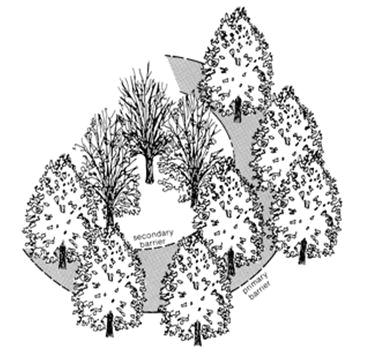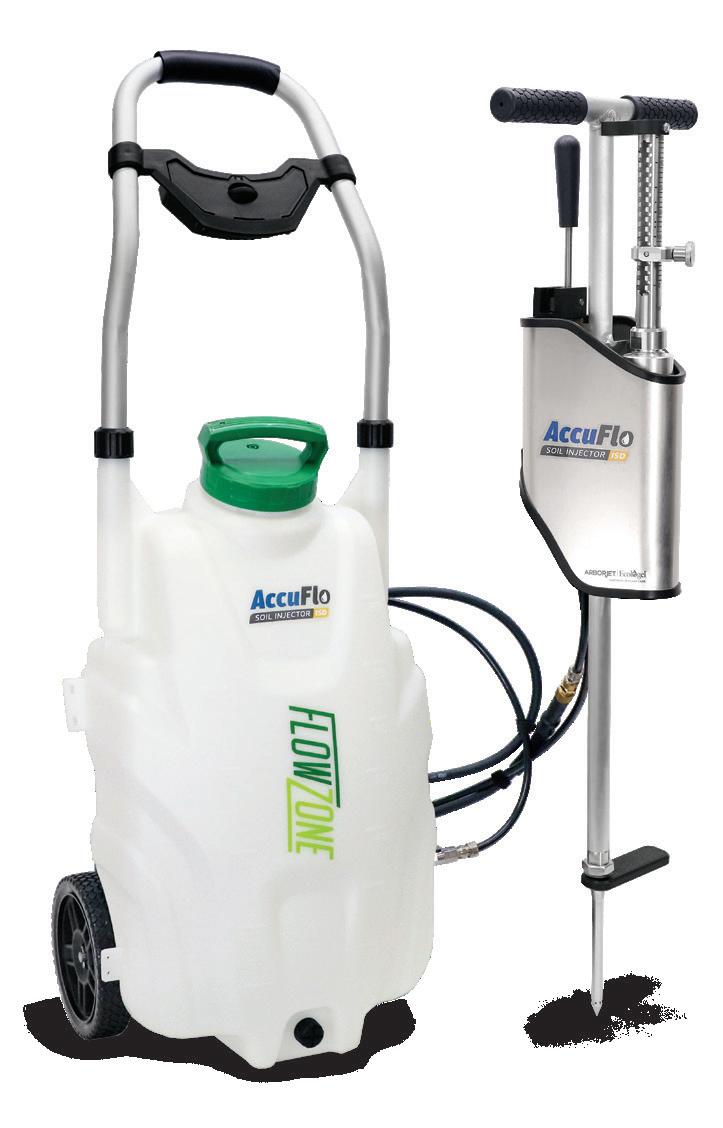
6 minute read
Oak Wilt
Jeff Hagfors, Duke Energy
Causes
Advertisement
Oak wilt, caused by the fungus Ceratocystis fagacearum has become a serious disease threat to oaks in the eastern and central United States. While the spread of oak wilt has not been rapid, it can be found in all counties of Illinois and 18 other states. The estimated range of oak wilt runs from southern Michigan through central Pennsylvania along the Appalachian Mountains south to Georgia, westward to the Great Plains and including much of Texas, then northward into Minnesota.
All oaks may be susceptible to oak wilt. However, the red oak subgenus (red, black, pin, and scarlet) is more susceptible to oak wilt than the white oak subgenus (white, bur, English, swamp white, and chinkapin).
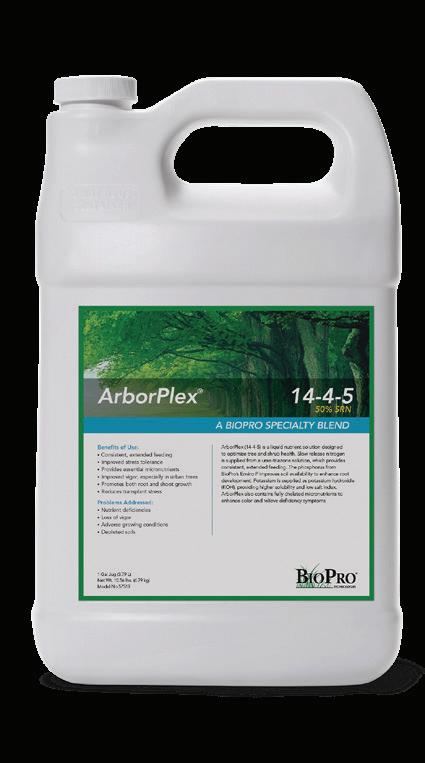
Trees in the red oak group usually die quite rapidly, often within weeks or months after infection. Erythrobalanus
Trees in the white oak group typically develop symptoms more slowly, showing branch dieback for years before dying. In some cases, white and bur oaks recover after one year of infection.
Symptoms
The primary symptom of oak wilt is the wilting of leaves and defoliation. Browning begins on the margin of the leaf and moves inward, and there is a distinct line between dead tissue and living tissue. Leaves normally fall before they have completely browned trees in the red oak group
An additional sign of the disease is the presence of fungal spore mats on Trees in the red oak group. They split the bark open and attract insects with their fruity odor.
While in white and bur oaks the wilting may occur on branches scattered throughout the tree. Streaking of the sapwood beneath the bark is a sign of the defense response of the tree, and provides further evidence of oak wilt in trees in the white oak group
Isolated branch loss or sections of death and decline is usually found in Trees in the white oak group is
Controlling The Spread
The most important aspect of oak wilt control is physical disruption of the root grafts between infected and healthy trees. Trees within the trench line, trees that cannot be trenched, and small groups of trees are good candidates for Propiconazole (Alamo) ESPECIALLY ON A PREVENATIVE BASIS
Depending on the situation, various management options are available.
Minimize Pruning.
Avoid any unnecessary wounding of oaks. Oaks should NOT be pruned between April 15 and October 15. Open wounds attract beetles that are most active during this period, increasing the likelihood of infection. If pruning is necessary during this time period, sterilize tools between each cut and paint the wound with nontoxic tree wound dressing. The safest time to prune oaks is after the first hard frost, or November 1 until April 1. Remove Infected Trees. Time is of the essence for success. Dead or infected red oaks should be removed from the site before they produce fungal spore mats the following spring. Nearby trees of the same species may also need to be removed because of the disease moving through root grafts. Consult a certified arborist about trees to be removed.
Sever Root Grafts.
Root grafts can be severed with mechanical trenches or chemical methods. Again, consultation with a certified arborist is recommended. Mechanical trenching equipment can be used to cut through the roots around an infected tree, creating a barrier 31/2 to 4 feet deep. Do not trench too close to the trunk of a tree. Several barriers will provide the best protection.
Although mechanical barriers are generally more effective than chemical barriers in stopping the spread of oak wilt, chemical barriers are the best option when space is limited for trenching by the presence of sidewalks, driveways, utility lines, or other obstructions. Most chemicals recommended for treating oak wilt have a label restriction that requires a licensed pesticide applicator to apply the chemical.
Remove Infected Wood.
Another way to prevent oak wilt spread is to stop the movement of infected logs and firewood. New pockets of the disease occur when beetles visit transported logs that contain fungal mats. Logs from the red oak group should not be transported unless all bark is removed. Trees in the white oak group do not form mats and can be used safely as firewood. Fungicide Injections. Propiconazole (Alamo) is labeled for oak wilt management on both red and white oak groups under certain conditions. Consult with a knowledgeable Certified Arborist in your area. This option
TIMING and HOW
There is no known chemical treatment that is capable of “curing” the disease; however, fungicide research is continuing. The development of new oak wilt pockets can be avoided, however, by either preventing the development of spore mats of the fungus on diseased trees or by preventing the transfer of fungal spores to healthy trees. In practice this 16 17 involves removing dead or diseased trees and avoiding injury to healthy trees. Remove Infected Trees
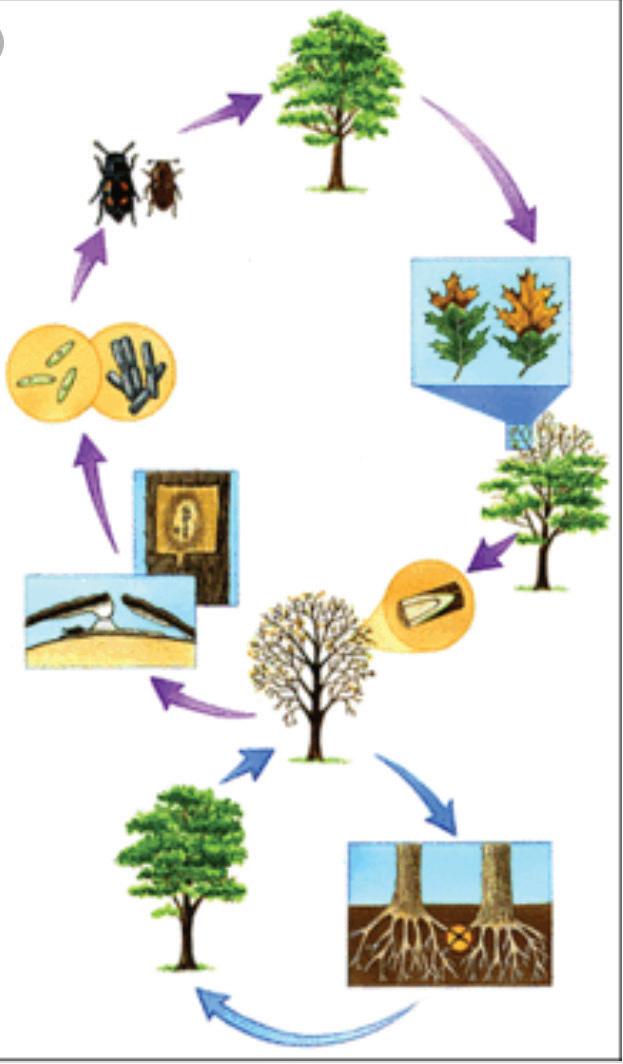
Trees that are infected with or have died from oak wilt should be removed and properly treated to prevent development of spore mats. These treatments include debarking, chipping or splitting, and drying the wood. Covering dead wood with plastic, burying the edges for 6 months, and then air drying for a similar time will kill the fungus and any associated insects.
Trees that die in summer should be removed and treated before the following spring, which is when new spore mats can develop. If the wood is sufficiently dried, however, spore mats will not develop.
A word of caution: Removing a diseased tree that is still living may actually facilitate the spread of the disease by accelerating the movement of the fungus into adjacent trees that are grafted to it by the roots. die before root grafts can be re-established. The oak wilt fungus does not survive in the root systems of dead trees for more than a few years. 18 19 The potential for spread of oak wilt through grafted roots is especially high after a diseased tree is removed or dies.
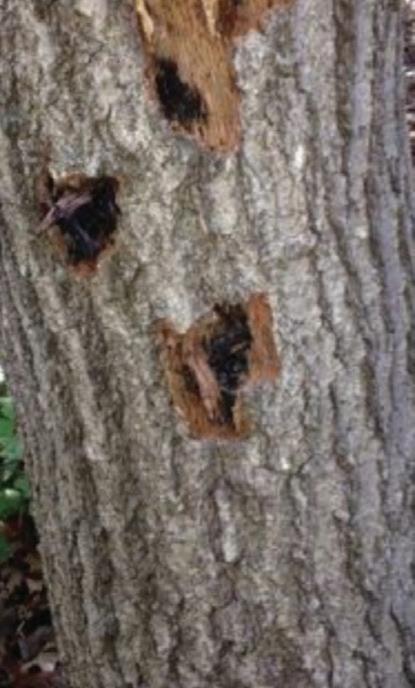

While a diseased tree is still living and intact, there is some resistance to fungal spores moving through root grafts into the roots of healthy trees. The removal or death of a diseased tree removes this natural resistance to spore movement, and spores may then travel more freely through interconnected roots.
To avoid this problem, disrupt interconnected roots before removing living diseased trees as described in the section on “Controlling existing infection centers.” Avoid Injuring Healthy Trees Freshly wounded trees that are growing outside of existing oak wilt centers can be visited by beetles transporting spores of the fungus. Because open wounds create avenues for infection, damage to trees from construction, pruning, or severe storms may lead to new infection centers. Avoid injury to oaks during favorable conditions for infection, which in the North occur in spring and early summer, when spore mats are present and the beetles are flying. Favorable conditions usually occur between April 15 and July 1 in the Lake States
In particular, pruning or construction activities in or near oak woodlots during the susceptible period often results in injury to oak trees that leads to infection.
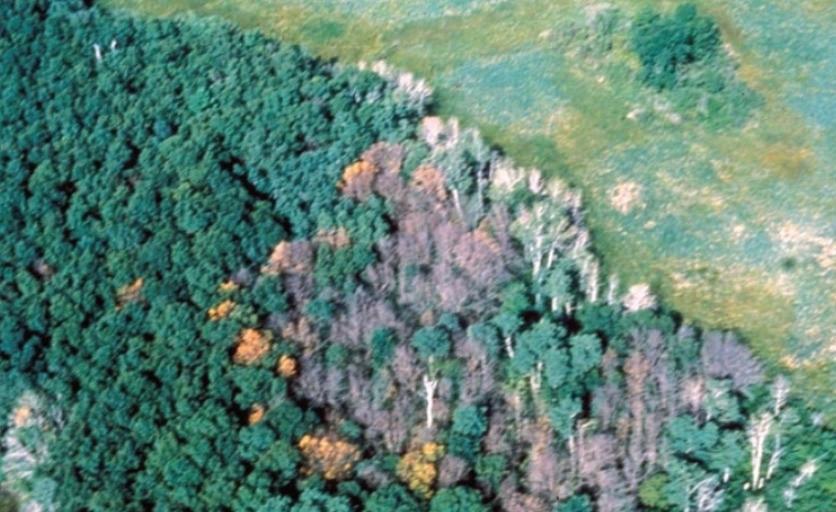
If construction activity, tree removal, or pruning is unavoidable, or if storms injure oak trees during the critical period, the wounds should be treated with a commercial tree paint or wound dressing. If whole trees are removed during the critical period, the stumps should also be treated with tree paint. It is very important that the fresh wounds be treated immediately because the insects that carry spores of the pathogen are often attracted to these wounds within a very short time. Tree paints are normally not recommended for general use, but using these products in this situation can protect trees from oak wilt. In the North, tree paints are not necessary if trees are wounded during the dormant season; however, judicious use during the rest of the year is recommended.
Controlling Existing Infection Centers Once the oak wilt fungus becomes established in a stand that includes a high proportion of oak, it will often continue to spread through the grafted root systems of the trees, infecting healthy oaks.
Disrupting the connections between the roots of infected and healthy trees limits the spread of oak wilt and is an effective control measure. Infected trees and their roots will usually http://na.fs.fed.us/pubs/howtos/ht_oakwilt/identify_ prevent_and_control_oak_wilt_print.pdf http://www.mortonarb.org/trees-plants/tree-and-plantadvice/help-diseases/oak-wilt https://www.extension.purdue.edu/extmedia/BP/BP-28-w. pdf
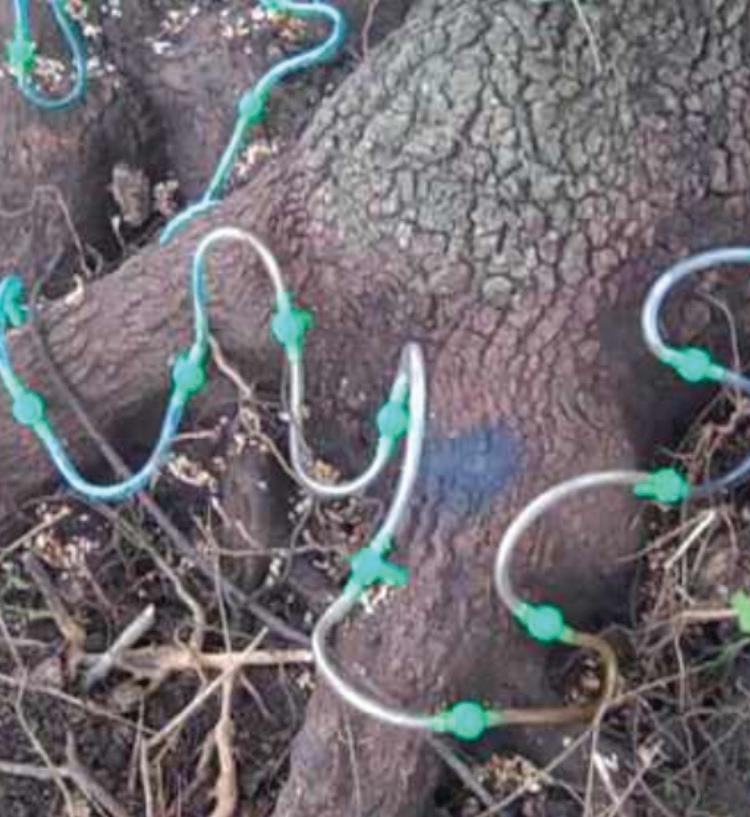
Therefore, the timing of a root disruption treatment is critical. Roots should be disrupted before an infected tree dies or is removed, or within a short time of tree death, for maximum protection of healthy trees. Interconnected root systems can be disrupted with a trencher, vibratory plow, or other equipment or chemicals.
